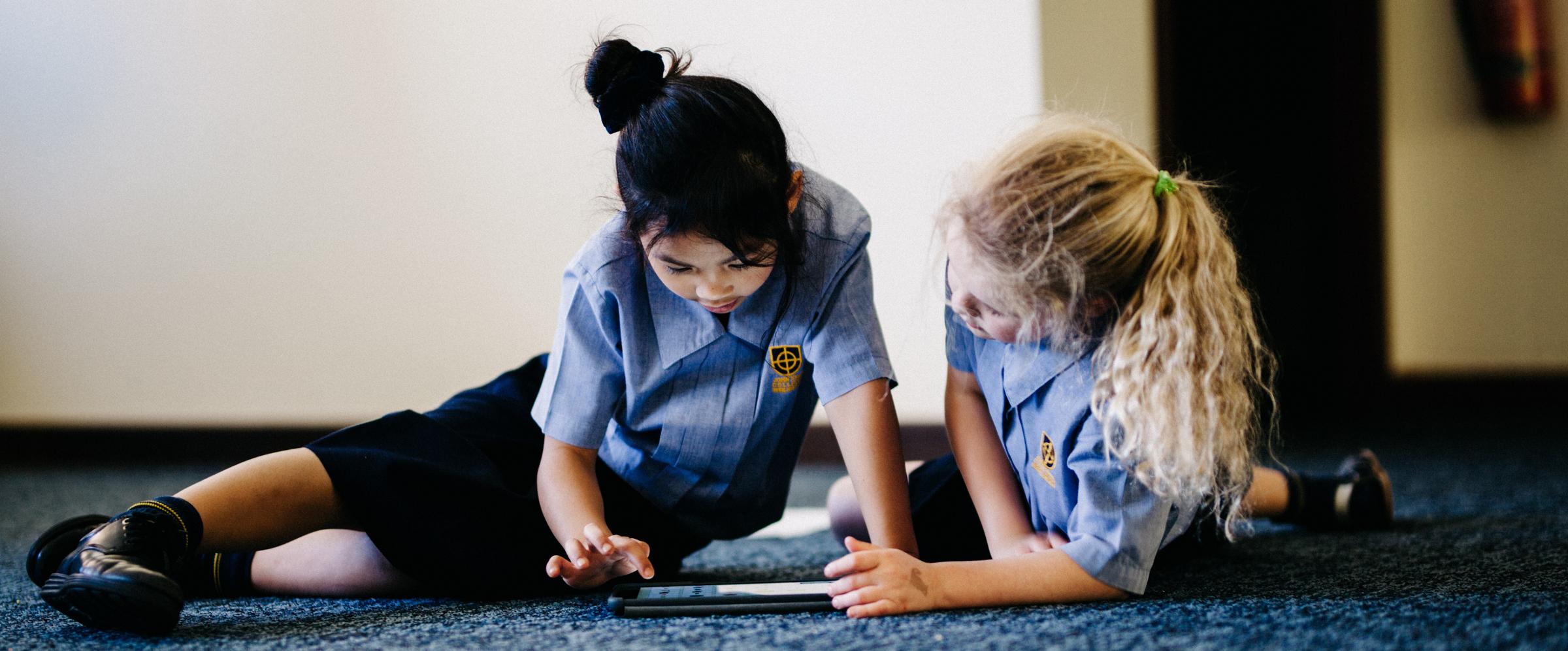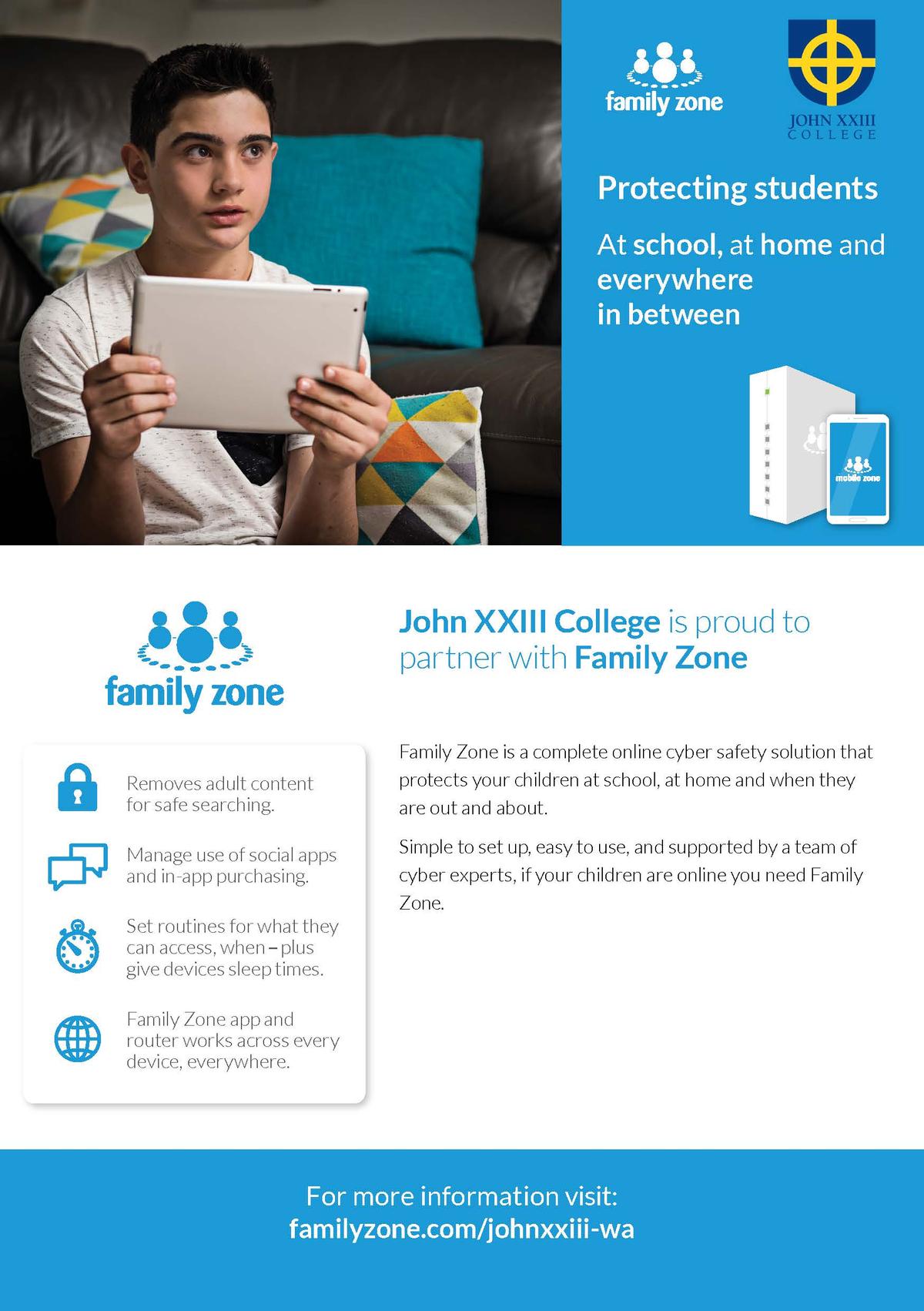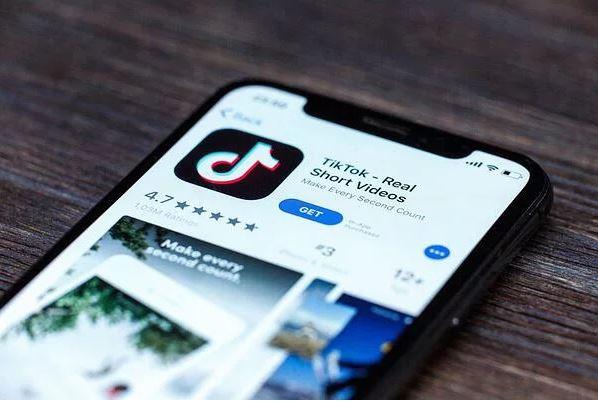Family Zone & Cyber Safety

Download Family Zone
Make use of the Family Zone Accounts which we are offering to John XXIII College families for free, as part of our College contract negotiations until April 2020.
By setting up a private Family Zone account, you can apply age-appropriate parental controls on every device your child has access to, in any location. To find out more visit https://www.familyzone.com/johnxxiii-wa
Family Zone Webinar recordings
For those that were unable to make the Family Zone webinars, we have recorded both sessions for you to view in your own time, and they are available here: https://www.familyzone.com/johnxxiii-wa
Webinar topics are:
- Getting Started with Family Zone
- Advanced with Family Zone
One mum's jaw-dropping journey through TikTok
It’s just kids making music videos, right? Wrong.
TikTok (formerly Musicaly.ly) is also millions of strangers uploading live-streamed content - and porn and predators may be the least of its risks.
Mum and journalist Anastasia Basil decided to download the app on her own phone when her 10-year-old daughter asked for it. Her verdict?
“One word sums up my experience: Nowayismykidgettingthisapp.”
TikTok - the world's most popular app - is a social network that allows users to lip sync to songs, create short videos, and stream themselves live, as well as view the videos and livestreams of others, and to comment and chat.
Sexualisation of children
Most disturbing of all, Basil found, was watching children as young as eight sexually objectify themselves.
“The kids who get it right - the tweeny Kardashians - gain followers,” she notes. Those who aren’t “sexy” enough are bullied and abused in the comments section.
Even worse, their content may be added to one of the “TikTok Cringe Compilation” videos on YouTube - some of which have north of five million views.
The harm is not limited to the children whose images are exploited, but extends to every child who watches these cruel, crude videos, whether on YouTube or TikTok.
Secret codes
Among other discoveries, Basil found out about TikTok’s “code language” that’s used to bypass the platform’s filters.
“Some kids hashtag their videos with words like thot, which stands for That Ho Over There, or fgirl, hottie, sxy, whooty or sin,” she explains. “But good luck keeping up, the code changes week-to-week.”
TikTok’s staple fare is kids lip-synching to popular songs. If that sounds pretty harmless, consider that this inevitably means children “mouthing words about rough sex.”
“Some kids hashtag their videos with words like thot, which stands for That Ho Over There, or fgirl, hottie, sxy, whooty or sin. But good luck keeping up, the code changes week-to-week.
Self-harm content
Basil was also shocked to find #killingstalking TikTok videos showing boys putting knives to girls’ throats, and #selfharm images showing an endless array of suicide options, in addition to over 11,000 #selfhate videos.
The risk to children is particularly terrifying, because their undeveloped brains lack the capacity for impulse control.
Targeting undeveloped brains
Family Zone cyber expert and child development specialist Dr. Kristy Goodwin echoes these views.
“The frontal lobe of the brain, which is responsible for impulse control, isn’t fully developed in our kids or teens (in fact it isn’t developed until the twenties for most kids).
“The limited impulse control skills they do have are compromised when their brains are flooded with dopamine, as this neurotransmitter literally hijacks the logical part of their brain, making it even more challenging to resist urges.
“I’ve been asked by so many parents recently about TikTok and whether it’s appropriate for primary school aged children. My answer is an emphatic no.”



